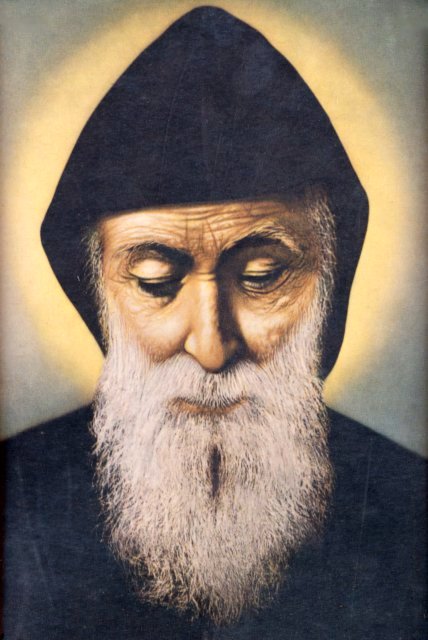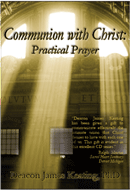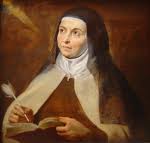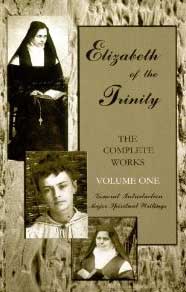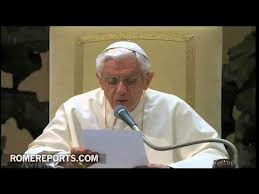 (Vatican Radio) – The Liturgy is the school of prayer where God Himself teaches us to pray. But in order to celebrate the Liturgy well, to really experience the re-enactment of Christ’s Paschal Mystery we must make our hearts God’s Altar and understand that the Liturgy is the action of God and of man, as the Second Vatican Council teaches us. In his latest instalment in his cycle on the School of Prayer, Pope Benedict XVI dedicated his Wednesday audience to prayer and the liturgy. Emer McCarthy reports:
(Vatican Radio) – The Liturgy is the school of prayer where God Himself teaches us to pray. But in order to celebrate the Liturgy well, to really experience the re-enactment of Christ’s Paschal Mystery we must make our hearts God’s Altar and understand that the Liturgy is the action of God and of man, as the Second Vatican Council teaches us. In his latest instalment in his cycle on the School of Prayer, Pope Benedict XVI dedicated his Wednesday audience to prayer and the liturgy. Emer McCarthy reports:
[powerpress = “Vatican_Radio”]
Below a Vatican Radio translation of the Holy Father’s catechesis:
Dear Brothers and Sisters,
in recent months we have made a journey in the light of the Word of God, to learn to pray in a more authentic way by looking at some great figures in the Old Testament, the Psalms, the Letters of St. Paul and the Book of Revelation, but also looking at unique and fundamental experience of Jesus in his relationship with the Heavenly Father. In fact, only in Christ, is man enabled to unite himself to God with the depth and intimacy of a child before a father who loves him, only in Him can we turn in all truth to God and lovingly call Him “Abba! ! Father. ” Like the Apostles, we too have repeated and we still repeat to Jesus, “Lord, teach us to pray” (Lk 11:1).In addition, in order to live our personal relationship with God more intensely, we have learned to invoke the Holy Spirit, the first gift of the Risen Christ to believers, because it is he who “comes to the aid of our weakness; for we do not know how to pray as we ought,”(Romans 8:26).
At this point we can ask: how can I allow myself to be formed by the Holy Spirit? What is the school in which he teaches me to pray and helps me in my difficulties to turn to God in the right way? The first school of prayer which we have covered in the last few weeks is the Word of God, Sacred Scripture, Sacred Scripture in permanent dialogue between God and man, an ongoing dialogue in which God reveals Himself ever closer to us. We can better familiarize ourselves with his face, his voice, his being and the man learns to accept and to know God, to talk to God. So in recent weeks, reading Sacred Scripture, we looked for this ongoing dialogue in Scripture to learn how we can enter into contact with God.
There is another precious “space”, another valuable “source” to grow in prayer, a source of living water in close relation with the previous one. I refer to the liturgy, which is a privileged area in which God speaks to each of us, here and now, and awaits our response.
What is the liturgy? If we open the Catechism of the Catholic Church – an always valuable and indispensable aid especially in the Year of Faith, which is about to begin – we read that originally the word “liturgy” means ” service in the name of/on behalf of the people” (No. 1069) . If Christian theology took this word from the Greek world, it did so obviously thinking of the new People of God born from Christ opened his arms on the Cross to unite people in the peace of the one God. “service on behalf of the people ” a people that does not exist by itself, but that has been formed through the Paschal Mystery of Jesus Christ. In fact, the People of God does not exist through ties of blood, territory or nation, but is always born from the work of the Son of God and communion with the Father that He obtains for us.
The Catechism also states that “in Christian tradition (the word” liturgy “) means the participation of the People of God in “the work of God.” Because the people of God as such exists only through the action of God.
Tags: liturgy, pope benedict xvi, prayer, school of prayer
This entry was posted on Wednesday, September 26th, 2012 at 10:31 am
You can follow any responses to this entry through the RSS 2.0 feed.
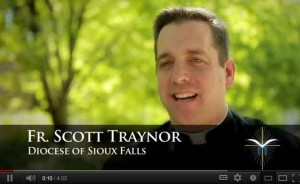 Fr. Scott Traynor from the Institute for Priestly Formation describes the 3 levels of the heart.
Fr. Scott Traynor from the Institute for Priestly Formation describes the 3 levels of the heart.
Tags: creighton university, institute for priestly formation, prayer
This entry was posted on Saturday, September 15th, 2012 at 5:39 am
You can follow any responses to this entry through the RSS 2.0 feed.
Prayers and Chaplet for St. Charbel
Saint Charbel was born on May 8, 1828 from a modest Maronite family in Bekaa Kafra, a village in North Lebanon. He entered the order of Lebanese monks in 1851 and was ordained a priest in 1859. Later he withdrew to the hermitage of Saints Peter and Paul to spend 23 years in prayer, fasting, manual labor, and penance, until on Christmas Eve of the year 1898 he piously gave back his soul to God. Aged 70 years. After his death, many graces and bodily cures have been obtained through his intercession. He was canonized by His Holiness Paul VI in 1977.
For more on visit his Discerning Hearts St. Charbel page
Chaplet
[powerpress]
THE CHAPLET
The chaplet is made up of five sets of beads, three red, one white and one blue. Five black beads, divide the sets. A medal of the saint connects the beads, with a single white bead following the medal and preceding the five sets.
The red beads are for the vows of poverty, chastity and obedience, the virtues by which religious share in the Passion of Christ.
The white beads represent the Holy Eucharist, and the blue beads love and devotion to Our Blessed Mother.
ORDER OF RECITATION
On the first white bead after the medal say the “Father of Truth” prayer. On each black bead recite an “Our Father”.
On the first three red beads say the “Hail Mary” in honor of Saint Charbel’s fidelity to the vow of poverty.
On the second set of red beads say the “Hail Mary” in honor of Saint Charbel’s fidelity to the vow of chastity.
On the third set of red beads say the “Hail Mary” in honor of Saint Charbel’s fidelity to the vow of obedience.
On the three white beads say the “Hail Mary” in honor of Saint Charbel’s love for the Eucharist.
On the three blue beads say the “Hail Mary” in honor of Saint Charbel’s devotion to Our Blessed Mother. Conclude with the prayer to obtain graces on the medal.
Father of Truth Prayer
Father of Truth, behold Your Son, a sacrifice pleasing to You. Accept this offering of Him who died for me; behold His blood shed on Golgotha for my salvation. It pleads for me. For His sake, accept my offering. Many are my sins, but greater is Your mercy. When placed on a scale, Your mercy prevails over the weight of the mountains known only to You. Consider the sin and consider the atonement; the atonement is greater and exceeds the sin. Your beloved Son sustained the nails and the lance because of my sins so in His sufferings You are satisfied and I live.
Prayer to Obtain Graces
Lord, infinitely holy and glorified in Your saints, You have inspired Charbel, the saint monk, to lead the perfect life of a hermit. We thank You for granting him the blessing and the strength to detach himself from the world so that the heroism of the monastic virtues of poverty, chastity, and obedience might triumph in his hermitage. We beseech You to grant us the grace of loving and serving You, following his example. Almighty God, who have manifested the power of Saint Charbel’s intercession through his countless miracles and favors, grant us this grace (here mention your intention) which we request from You through his intercession. Amen.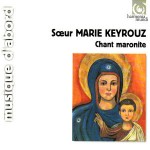
the music found in the Chaplet is from Sister Marie Keyrouz’s CD
Other Prayers
Lord, infinitely Holy and Glorified in Your Saints,
You have inspired Charbel, the saint monk,
to lead the perfect life of a hermit.
We thank You for granting him the blessing
and the strength to detach himself from the world
so that the heroism of the monastic virtues of poverty,
obedience, and chastity,
could triumph in his hermitage.
We beseech You to grant us the grace of loving and serving You,
following his example.
Almighty God, Who has manifested
the power of St. Charbel’s intercession
through his countless miracles and favours,
grant us…
(State your intention(s) here…)
through his intercession.
Amen.
Our Father…
Hail Mary…
Glory Be…
2.
O God of Silence, in stillness Your adorable and mysterious Trinity lives, loves and acts. In the silence of 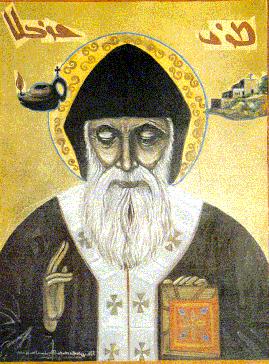 time, Your great Mysteries have been accomplished. Blessed is the one who quiets everything within himself and listens to the impelling voice which leads to You. Charbel heard this voice and closed himself in solitude. He separated himself from a self-seeking world and spoke with You. You taught him to deny himself and to die, like the grain of wheat. You asked him to bind himself to You in a life of poverty, chastity and obedience. Freed from himself, he discovered You, 0 Lord, embraced the way of the Cross and filled his spirit with the memory of Your Son’s passion and death. The holy Mysteries became his life, the Eucharist his real food and the Mother of God his consolation. Day and night he sought You in the Scriptures and in the lives of the saints. Through unending prayer his whole life became a living hymn of praise to You and ended in a sacrifice of love that continues to proclaim Your glory. We beseech You, through his intercession, to inspire us to a life of prayer and sacrifice. Help us to live lives of quiet dedication to the service of Your Church, forever.
time, Your great Mysteries have been accomplished. Blessed is the one who quiets everything within himself and listens to the impelling voice which leads to You. Charbel heard this voice and closed himself in solitude. He separated himself from a self-seeking world and spoke with You. You taught him to deny himself and to die, like the grain of wheat. You asked him to bind himself to You in a life of poverty, chastity and obedience. Freed from himself, he discovered You, 0 Lord, embraced the way of the Cross and filled his spirit with the memory of Your Son’s passion and death. The holy Mysteries became his life, the Eucharist his real food and the Mother of God his consolation. Day and night he sought You in the Scriptures and in the lives of the saints. Through unending prayer his whole life became a living hymn of praise to You and ended in a sacrifice of love that continues to proclaim Your glory. We beseech You, through his intercession, to inspire us to a life of prayer and sacrifice. Help us to live lives of quiet dedication to the service of Your Church, forever.
Amen
Tags: Obtain Graces, Saint Charbel, St. Charbel, Truth Prayer
This entry was posted on Friday, September 14th, 2012 at 12:36 am
You can follow any responses to this entry through the RSS 2.0 feed.
[powerpress = “Vatican_Radio”]
VATICAN CITY, SEPT. 12, 2012 (Zenit.org).- Here is a translation of the address Benedict XVI gave today in Paul VI Hall at the general audience. The Holy Father today continued his reflection on prayer in the book of Revelation.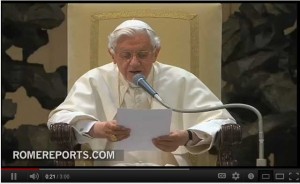
* * *
Dear brothers and sisters,
Last Wednesday I spoke about prayer in the first part of Revelation. Today we move on to the second part of the book; and whereas in the first part, prayer is oriented toward the Church’s inner life, in the second, attention is given to the entire world; the Church, in fact, journeys through history; she is part of it, in accordance with God’s plan.
The assembly that listened to John’s message presented by the reader rediscovered its duty to cooperate in the expansion of the Kingdom of God, as “priests of God and of Christ” (Revelation 20:6; cf. 1:5; 5:10) and it opens out to the world of men. And here, in the dialectical relationship that exists between them, two ways of living emerge: the first we may define as the “system of Christ,” to which the assembly is happy to belong; and the second, the “worldly systems opposed to the kingdom and the covenant and activated through the influence of the Evil One,” who by deceiving men wills to establish a world opposed to the one willed by Christ and by God (cf. Pontifical Biblical Commission, The Bible and Morality, Biblical Roots of Christian Conduct, 70).
The assembly must therefore know how to interpret in depth the history it is living, by learning to discern events with faith in order to cooperate by its action in the growth of the Kingdom of God. And this work of interpretation and discernment, as well as action, is linked to prayer.
First, after the insistent appeal of Christ, who in the first part of Revelation said seven times: “He who has an ear, let him hear what the Spirit says to the Church” (cf. Revelation 2:7,11,17,29; 3:6,13,22), the assembly is invited to ascend to Heaven, to look upon reality through God’s eyes; and here we discover three symbols, reference points from which we may begin to interpret history: the throne of God, the Lamb and the book (cf. Revelation4:1 – 5:14).
The first symbol is the throne, upon which there is seated a person John does not describe, for he surpasses every human representation. He is only able to note the sense of beauty and joy he experiences in His presence. This mysterious figure is God, God Almighty who did not remain enclosed within His heaven but who drew close to man, entering into a covenant with him; God who makes his voice — symbolized by thunder and lightning — heard in history, in a mysterious but real way. There are various elements that appear around the throne of God, such as the twenty-four elders and the four living creatures that unceasingly render praise to the one Lord of history.
The first symbol, then, is the throne. The second symbol is the book, which contains the plan of God for events and for men. It is hermetically sealed with seven seals, and no one is able to read it. Faced with man’s inability to scrutinize the plan of God, John experiences a deep sadness, which causes him to weep. But there is a remedy for man’s dismay before the mystery of history: there is one who is able to open the book and shed light on it.
And here the third symbol appears: Christ, the Lamb immolated in the sacrifice of the Cross, but who stands as a sign of his Resurrection. And it is the Lamb, Christ who died and rose, who gradually opens the seals and unveils the plan of God, the deep meaning of history.
What do these symbols tell us? They remind us of the path to knowing how to interpret the facts of history and of our own lives. By raising our gaze to God’s heaven in a constant relationship with Christ, by opening our hearts and our minds to him in personal and communal prayer, we learn to see things in a new way and to grasp their truest meaning. Prayer is like an open window that allows us to keep our gaze turned toward God, not only for the purpose of reminding us of the goal toward which we are directed, but also to allow the will of God to illumine our earthly journey and to help us to live it with intensity and commitment.
How does the Lord guide the Christian community to a deeper reading of history? First and foremost, by inviting it to consider with realism the present moment we are living. Therefore, the Lamb opens the four first seals of the book, and the Church sees the world in which it is inserted, a world in which various negative elements exist. There the evils that man commits, such as violence, which comes from the desire to possess, to prevail against one another to the point of killing one another (second seal); or injustice, as men fail to respect the laws that are given them (third seal). To these are added the evils that man must undergo, such as death, hunger and sickness (fourth seal). Faced with these oftentimes dramatic realities, the ecclesial community is invited to never lose hope, to believe firmly that the apparent omnipotence of the Evil One collides with the true omnipotence, which is God’s.
And the first seal the Lamb opens contains precisely this message. John narrates: “And I saw, and behold, a white horse, and its rider had a bow; and a crown was given to him, and he went out conquering and to conquer” (Revelation 6:2). The power of God has entered into the history of man, [a power] which is not only capable of offsetting evil, but even of conquering it. The color white recalls the Resurrection: God drew so near to us that he descended into the darkness of death in order to illumine it with the splendor of his divine life: he took the world’s evil upon himself in order to purify it with the fire of his love.
How do we grow in this Christian understanding of reality? Revelation tells us that prayer nourishes this vision of light and profound hope in each one of us and in our communities: it invites us to not allow ourselves to be overcome by evil, but to overcome evil with good, to look to the Crucified and Risen Christ, who associates us in his victory. The Church lives in history, she is not closed in on herself; but rather, she courageously faces her journey amid difficulties and suffering, by forcefully affirming that ultimately, evil does not conquer the good, darkness does not dim the splendor of God.
This is an important point for us; as Christians we can never be pessimists; we know well that along life’s journey we often encounter violence, falsehood, hate and persecution, but this does not discourage us. Above all, prayer teaches us to see the signs of God, of his presence and action; indeed, to be lights of goodness that spread hope and point out that the victory is God’s.
Tags: book of revelation, pope benedict xvi, prayer
This entry was posted on Thursday, September 13th, 2012 at 8:58 am
You can follow any responses to this entry through the RSS 2.0 feed.
Vatican City, 5 September 2012 (VIS)
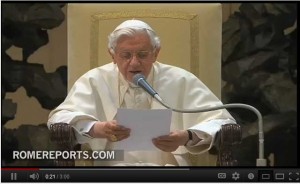
 – Benedict XVI today resumed his general audiences in the Vatican, having held them at Castelgandolfo during the month of August. Meeting with faithful in the Paul VI Hall he turned his attention to prayer in the Book of Revelation which, he explained, “presents us with the living breathing prayer of the Christian assembly, gathered together ‘on the Lord’s day'”.Revelation, Pope Benedict went on, “is a difficult book, but one of great richness. … In it a reader presents the assembly with a message entrusted by God to John the Evangelist. … From the dialogue between them a symphony of prayer arises which is then developed in many different forms up until the conclusion”.The first part of Revelation presents us with the assembly in prayer in three successive phases. The first of these highlights how “prayer is, above all, a listening to God Who speaks. Engulfed as we are by so many words we are little used to listening, and especially to adopting an interior and exterior attitude of silence so as to attend to what the Lord wishes to say to us. These verses also teach us that our prayers, often merely prayers of request, must in fact be first and foremost prayers of praise to God for His love, for the gift of Jesus Christ which brought us strength, hope and salvation. … God, Who reveals Himself as the beginning and the end of the story, welcomes and takes to heart the assembly’s request”.This first phase also includes another important element. “Constant prayer revives in us a sense of the Lord’s presence in our life and history. His presence supports us, guides us and gives us great hope. … Prayer, even that pronounced in the most extreme solitude, is never a form of isolation and it is never sterile, it is a vital lymph which nourishes an increasingly committed and coherent Christian existence”.In the second phase of the prayer of the assembly “the relationship with Jesus Christ is developed further. The Lord makes Himself visible, He speaks and acts, and the community, increasingly close to Him, listens, reacts and accepts”.In the third phase “the Church in prayer, accepting the word of the Lord, is transformed. … The assembly listens to the message, and receives a stimulus for repentance, conversion, perseverance, growth in love and guidance for the journey”.“The Revelation”, Benedict XVI concluded, “presents us with a community gathered in prayer, because it is in prayer that we gain an increasing awareness of Jesus’ presence with us and within us. The more and the better we prayer with constancy and intensity, the more we are assimilated to Him, and the more He enters into our lives to guide them and give them joy and peace. And the more we know, love and follow Jesus, the more we feel the need to dwell in prayer with Him, receiving serenity, hope and strength for our lives”.
[powerpress = Â Vatican_Radio]
Tags: book of revelation, pope benedict xvi
This entry was posted on Wednesday, September 5th, 2012 at 5:26 pm
You can follow any responses to this entry through the RSS 2.0 feed.
[powerpress] Msgr. Esseff powerfully reflects on the journey to the inner self guided by the Holy Spirit into the heart and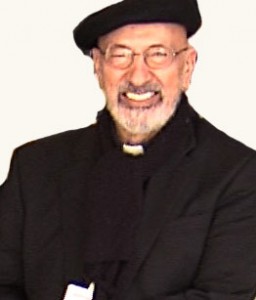 St. Teresa Benedicta of the Cross (Edith Stein).  He examines the writings of the prophet Jeremiah and St. Matthew and what it means to have true union with God.  It is exemplified in the life and journey of Edith Stein.  It will all lead to the heart of Jesus.
St. Teresa Benedicta of the Cross (Edith Stein).  He examines the writings of the prophet Jeremiah and St. Matthew and what it means to have true union with God.  It is exemplified in the life and journey of Edith Stein.  It will all lead to the heart of Jesus.
Tags: edith stein, heart, holy spirit, Jesus
This entry was posted on Thursday, August 9th, 2012 at 1:00 pm
You can follow any responses to this entry through the RSS 2.0 feed.
[powerpress]
Msgr John Esseff offers the following prayers. Â Be sure to visit his website: Â www.msgrjohnesseff.net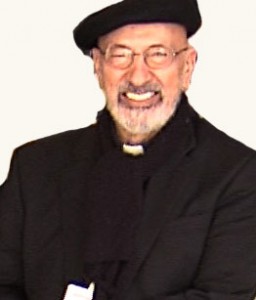
EXAMINATION OF CONSCIENCE
FORGIVENESS PRAYER
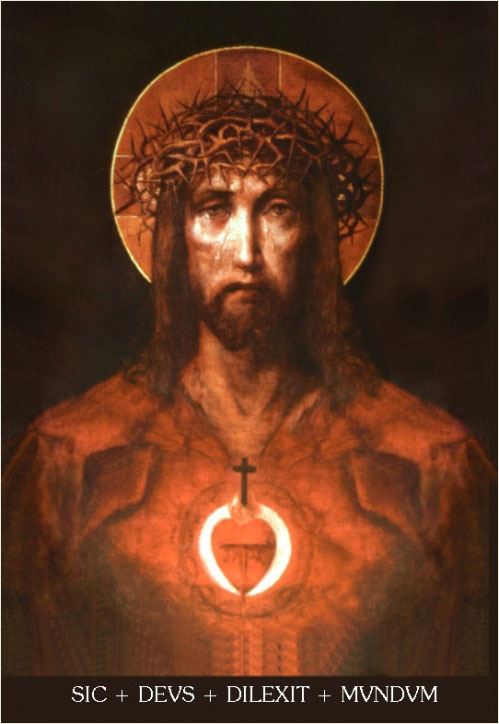 The following prayer covers most of the significant areas of forgiveness. Often, such a prayer will bring to mind other areas that need forgiveness. Let the Holy Spirit move freely and guide your mind to persons or groups that you need to forgive. This is especially useful before confession.
The following prayer covers most of the significant areas of forgiveness. Often, such a prayer will bring to mind other areas that need forgiveness. Let the Holy Spirit move freely and guide your mind to persons or groups that you need to forgive. This is especially useful before confession.
Lord Jesus Christ, I ask today to forgive everyone in my life. I know that You will give me the strength to forgive and I thank You that You love me more than I love myself and want my happiness more than I desire it for myself.
Father, I forgive Your for the times death has come into my family, hard times, financial difficulties, or that I thought were punishments sent by You and people said “It’s God;s will,†and I became bitter and resentful toward You. Purify my heart and mind today.
Lord, I forgive MYSELF for my sins, faults and failings, for all that is bad in myself or that I think is bad, I forgive myself. For any delvings in superstition, using ouija boards, horoscopes, going to seances, using fortune telling or wearing lucky charms, I reject all that superstition and choose You alone as my Lord and Savior. Fill me with Your Holy Spirit.
I further forgive myself for taking Your name in vain, not worshipping You by attending church, for hurting my parents, getting drunk, for sins against purity, bad books, bad movies, fornication, adultery, homosexuality. You have forgiven me, today I forgive myself.
Also for abortion, stealing, lying, defrauding, hurting people’s reputation, I forgive myself.
I truly forgive my MOTHER, I forgive her for all the times she hurt me, she resented me, she was angry with me and for all the times she prefered my brothers and sisters to me. I forgive her for the times she told me I was dumb, ugly, stupid, the worst of the children or that I cost the family a lot of money. For the times she told me I was unwanted, an accident, a mistake or not what she expected, I forgive her.
I forgive my FATHER. I forgive him for any non-support, any lack of love, affection or attention. I forgive him for any lack of time, for not giving me his companionship, for his drinking, arguing and fighting with my mother or the other children. For his severe punishments, for desertion, for being away from home, for divorcing my mother or for any running around, I do forgive him. (more…)
Tags: jesus christ, Lord Jesus
This entry was posted on Wednesday, August 1st, 2012 at 12:45 am
You can follow any responses to this entry through the RSS 2.0 feed.
 Heart of Hope Part 5 – the purpose of life,  the suffering of humanity and how it relates to the grace of God. Emotional Suffering, Purgation, Christ’s sacrifice on the Cross, and Redemption.
Heart of Hope Part 5 – the purpose of life,  the suffering of humanity and how it relates to the grace of God. Emotional Suffering, Purgation, Christ’s sacrifice on the Cross, and Redemption.
[powerpress]
Deacon James Keating, PhD, the director of Theological Formation for the Institute for Priestly Formation, located at Creighton University, in Omaha, is making available to “Discerning Hearts” and all who listen, his series of programs entitled “The Heart of Hope”.
This extraordinarily popular series explores the work of suffering in the Christian life and how God can use it to transform the heart of the individual and the world. 
The “Heart of Hope”  tackles a very tough subject…the gift of suffering in the Christian life. Deacon Keating guides us well.
For more information on the “Institute of Priestly Formation” and for other material available by Deacon Keating, just click here
Don’t forget to pickup a copy of “Communion with Christ” , it is one of the best audio sets on prayer…ever!
Check out Deacon Keating’s “Discerning Heart” page
Tags: creighton university, institute for priestly formation, suffering
This entry was posted on Monday, July 30th, 2012 at 11:25 am
You can follow any responses to this entry through the RSS 2.0 feed.
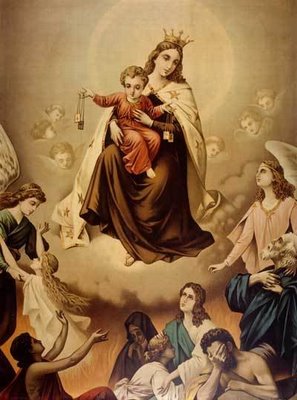 The Feast of Our Lady of Mount Carmel…
The Feast of Our Lady of Mount Carmel…
A prayer to Our Lady of Mt. Carmel
[powerpress]
from About.com
“According to the traditions of the Carmelite order, on July 16, 1251, the Blessed Virgin Mary appeared to St. Simon Stock, a Carmelite. During the vision, she revealed to him the Scapularof Our Lady of Mount Carmel, popularly known as the “Brown Scapular.” A century and a quarter later, the Carmelite order began to celebrate on this date the Feast of Our Lady of Mount Carmel.
The Carmelites had long claimed that their order extended back to ancient times-indeed, that it was founded on Mount Carmel in Palestine by the prophets Elijah and Elisha. While others disputed this idea, Pope Honorius III, in approving the order in 1226, seemed to accept its antiquity. The celebration of the feast became wrapped up with this controversy, and, in 1609, after Robert Cardinal Bellarmine examined the origins of the feast, it was declared the patronal feast of the Carmelite order.
The feast celebrates the devotion that the Blessed Virgin Mary has to those who are devoted to her, and who signal that devotion by wearing the Brown Scapular. According to tradition, those who wear the scapular faithfully and remain devoted to the Blessed Virgin until death will be granted the grace of final perseverance and be delivered from Purgatory early.”
I’m all about the cloth scapular rather than the medal or wood ones. It’s intent is to be a habit…who wears metal or wood clothing? I realize papal permission was given to wear the medal instead, but that was for missionaries in the jungle where the climate disintigrated the cloth quickly.  Really, would it really be a big problem, for those committed to the devotion, to wear the cloth scapular for solidarity sake?  Anyway…
Here are a few of the Carmelites dearest to our hearts:
Also THE SIXTEEN CARMELITE MARTYRS OF COMPIEGNE, but that’s tomorrow….
Tags: blessed virgin mary, brown scapular, catholic, catholic podcast, catholic prayer, cathollc spirituality, devotion, lady of mount carmel, Simon Stock
This entry was posted on Monday, July 16th, 2012 at 12:07 am
You can follow any responses to this entry through the RSS 2.0 feed.
Episode 17 Beginning to Pray: Â “Heaven in Faith” Â Day 9 Prayer 1- “God has predestined us to the adopotion of children through Jesus Christ, in union with Him…”
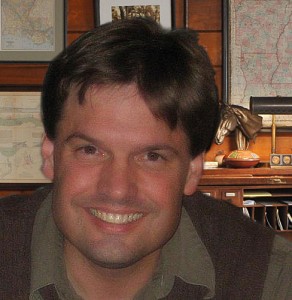
[powerpress]
Dr. Anthony Lilles is a Catholic husband and father of three teaching Spiritual Theology at St. John Vianney Theological Seminary. He  teaches spiritual theology and spiritual direction to transitional deacons, and the spiritual classics to the men who enter the Spirituality Year, a year of prayer in preparation for seminary formation.  He is the author of the “Beginning to Pray”  catholic blog spot.
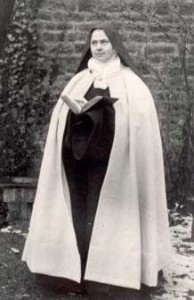 From “Heaven in Faith: Day 9 Prayer 1” found in The Complete Works vol 1:
From “Heaven in Faith: Day 9 Prayer 1” found in The Complete Works vol 1:
32.  “See,” says St. John, “what manner of love the Father has bestowed on us, that we should be called children of God’ and such we are….Now we are the children of God, and we have not yet seen what we shall be.  We know that when He appears, we shall be like Him, for we shall see Him just as He is.  And everyone who has this hope in Him makes himself holy, just as He Himself is holy.”
For other episodes in the series visit the Discerning Hearts page for Dr. Anthony Lilles
We would like to offer heartfelt thanks to
Miriam Gutierrez for providing for us “the voice” of Blessed Elizabeth for this series
Tags: Anthony Lilles, blessed elizabeth of the trinity, carmelites, catholic, catholic podcast, catholic prayer, cathollc spirituality, children of God, heaven in faith, prayer, Spiritual Theology, St. John Vianney Theological Seminary
This entry was posted on Wednesday, June 13th, 2012 at 6:31 pm
You can follow any responses to this entry through the RSS 2.0 feed.
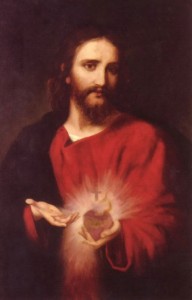
The month of June is dedicated in a special way to the Sacred Heart of Jesus.
[powerpress]
A Prayer to the Sacred Heart of Jesus
O most holy heart of Jesus, fountain of every blessing, I adore you, I love you, and with lively sorrow for my sins I offer you this poor heart of mine. Make me humble, patient, pure and wholly obedient to your will. Grant, Good Jesus, that I may live in you and for you. Protect me in the midst of danger. Comfort me in my afflictions. Give me health of body, assistance in my temporal needs, your blessing on all that I do, and the grace of a holy death. Amen.
Tags: catholic, catholic podcast, catholic prayer, cathollc spirituality, Good Jesus, holy heart of Jesus, sacred heart of jesus
This entry was posted on Friday, June 1st, 2012 at 10:36 am
You can follow any responses to this entry through the RSS 2.0 feed.
Mark Shea once again gives us an outstanding resource to grow in our Catholic faith! Â 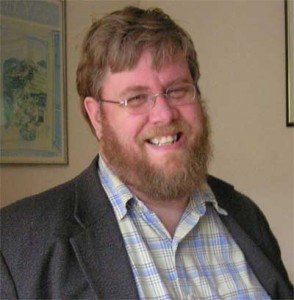 This time its with “The Heart of Catholic Prayer: Â Rediscovering the Our Father and the Hail Mary”. Â Mark takes great care and time with varied sections of each prayer and helps us to deeply reflect on the mystery contained within them. Â Both meditative and catechetical, what we will find is a treasure house of grace, which if pondered deeply, will unite us closer to the heart of the Father, the Son and the Holy Spirit. Â Outstanding!
This time its with “The Heart of Catholic Prayer: Â Rediscovering the Our Father and the Hail Mary”. Â Mark takes great care and time with varied sections of each prayer and helps us to deeply reflect on the mystery contained within them. Â Both meditative and catechetical, what we will find is a treasure house of grace, which if pondered deeply, will unite us closer to the heart of the Father, the Son and the Holy Spirit. Â Outstanding!
[powerpress]
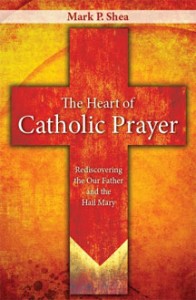 You can find Mark’s book here
You can find Mark’s book here
To learn and understand the Our Father and Hail Mary is to learn the deepest contours of the Church’s interior life, for both are prayers that come from the Holy Spirit, who is the soul of the Church.Â
Experience the ordinary truths of the Faith that the Church has always taught, but in ways which will generate a spark of recognition in the contemporary mind. Upon completion of this book, you will never recite either of these prayers in the same way again.
Tags: catholic, catholic podcast, catholic prayer, cathollc spirituality
This entry was posted on Monday, May 21st, 2012 at 4:30 am
You can follow any responses to this entry through the RSS 2.0 feed.
Episode 15 Beginning to Pray: Â “Heaven in Faith” Â Day 8 Prayer 1- “Those whom God has foreknown, He has aldo predestined to become confomed to the image of His divine Son…“

[powerpress]
Dr. Anthony Lilles is a Catholic husband and father of three teaching Spiritual Theology at St. John Vianney Theological Seminary. He  teaches spiritual theology and spiritual direction to transitional deacons, and the spiritual classics to the men who enter the Spirituality Year, a year of prayer in preparation for seminary formation.  He is the author of the “Beginning to Pray”  catholic blog spot.
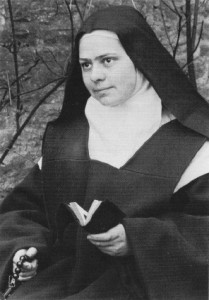 From “Heaven in Faith: Day 8 Prayer 1” found in The Complete Works vol 1:
From “Heaven in Faith: Day 8 Prayer 1” found in The Complete Works vol 1:
26.  This is how the mystery of predestination, the mystery of divine election appeared to the enlightened gaze of the Apostle.  “Those whom He has foreknown”  Are not we of that number?  Cannot God say to our soul what he once said through the voice of His prophet:  “I passed by you and saw you.  I saw that the time had come for you to be loved.  I spread my garment over you.  I swore to you to protect you, and I made a covenant with you, and you became mine.”
For other episodes in the series visit the Discerning Hearts page for Dr. Anthony Lilles
We would like to offer heartfelt thanks to
Miriam Gutierrez for providing for us “the voice” of Blessed Elizabeth for this series
Tags: Anthony Lilles, blessed elizabeth of the trinity, carmelites, catholic, catholic podcast, catholic prayer, cathollc spirituality, Elizabeth of the Trinity Episode 15, heaven in faith, Spiritual Theology, St. John Vianney Theological Seminary
This entry was posted on Saturday, May 19th, 2012 at 9:55 am
You can follow any responses to this entry through the RSS 2.0 feed.
[powerpress] Deacon Keating reflects on what intimacy with Jesus really means as realized in our experience of prayer and how that relationship can heal our fears. Â The writings of St. Peter Eymard are used by Deacon Keating to explore these areas.
how that relationship can heal our fears. Â The writings of St. Peter Eymard are used by Deacon Keating to explore these areas.
A Simple Blueprint for Prayer
“In your prayer, seek to nourish yourself on God, rather than…humbling yourself. To do this: nourish your mind with the truth personified in God’s goodness towards you…his personal love; here is the secret of true prayer. See the action and mind of God IN HIS LOVE FOR YOU! Then, in wonder, your soul will cry out… ‘How good you are my God. What can I do for you? What will please you?’ There is the fire of the furnace.â€
Tags: catholic, catholic podcast, catholic prayer, cathollc spirituality, Deacon Keating, institute for priestly formation, intimacy with Jesus, prayer, st. peter eymard
This entry was posted on Friday, May 18th, 2012 at 7:40 am
You can follow any responses to this entry through the RSS 2.0 feed.
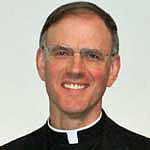 Episode 7Â Praying with Scripture: Christian Contemplation and Mediation in the Ignatian tradition w/Fr. Timothy Gallagher
Episode 7Â Praying with Scripture: Christian Contemplation and Mediation in the Ignatian tradition w/Fr. Timothy Gallagher
Fr. Gallagher continues to discuss the differences and benefits of meditation and contemplation – the cornerstones of Ignatius of Loyola’s spiritual practice.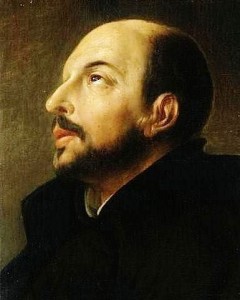
[powerpress]
For other episodes in the series visit The Discerning Hearts “Praying with Scripture†page
Father Timothy M. Gallagher, O.M.V., was ordained in 1979 as a member of the Oblates of the Virgin Mary, a religious community dedicated to retreats and spiritual formation according to the Spiritual Exercises of St. Ignatius. Â Fr. Gallagher is featured on the EWTN series “Living the Discerning Life: Â The Spiritual Teachings of St. Ignatius of Loyola”.
For more information on how to obtain copies of Fr. Gallaghers’s various books and audio which are available for purchase, please visit  his  website:   frtimothygallagher.org
 For the other episodes in this series check out Fr. Timothy Gallagher’s “Discerning Hearts†page
Tags: catholic, catholic podcast, catholic prayer, cathollc spirituality, Christian Contemplation, Timothy Gallagher, Timothy Gallagher Fr
This entry was posted on Thursday, May 10th, 2012 at 7:58 am
You can follow any responses to this entry through the RSS 2.0 feed.

